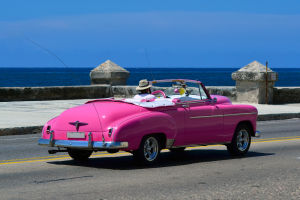In the annals of maritime history, sailing vessels stand as enduring symbols of humanity's earliest endeavors across the seas.
The technological ingenuity and seafaring wisdom that propelled these vessels forward are nothing short of remarkable.
However, in the era before the advent of motorized engines, a perplexing question lingers: How did sailboats navigate when the winds were still? This inquiry delves into a challenging and intricate aspect of maritime history.
The origins of sailing trace back to antiquity, when ships relied solely on the whims of the wind. While wind served as the primary motive force for sailboats, the maritime realm is fraught with unpredictable shifts in wind patterns, occasional storms, and moments of windlessness.
In such instances, when the sails hung slack, sailboats needed to deploy alternative methods to propel themselves forward, thus testing the resourcefulness and skill of their crews.
Firstly, a sailing vessel could harness ocean currents to maintain its course and advance. A myriad of currents and tidal flows traverse varying speeds and directions throughout the vast expanse of the oceans.
Armed with nautical charts and astute observations of oceanic phenomena, a prudent captain could strategically utilize favourable currents to assist the vessel's progress.
The ship could harmonize its movements with the prevailing currents through judicious adjustments in course and speed, thereby inching closer to its intended destination.
Secondly, even in the absence of wind, a sailboat could continue its journey through the concerted effort of its crew, who would resort to manual paddling. This endeavour demanded robust physical stamina and a unified spirit of teamwork among the sailors aboard.
In antiquity, sailing vessels often boasted a complement of oars, which, when the winds proved insufficient, could be wielded by the crew to row the vessel's hull forward. Though labour-intensive, this method was a vital recourse without alternative propulsion mechanisms.
Moreover, the design characteristics of the vessel itself played a pivotal role in determining its efficacy in navigating calm waters.
Specific sailboats boasted streamlined designs engineered to minimize water drag, facilitating easier progress when propelled by oars or capitalizing on favourable currents.
Variables such as hull weight, vessel shape, and the smoothness of the hull's underside influenced the vessel's performance in such conditions.
Nevertheless, notwithstanding these adaptive measures, the progress of a sailboat in windless conditions remained circumscribed.
There were instances where vessels becalmed for prolonged periods, awaiting the return of favourable winds or the emergence of promising currents.
Such scenarios were commonplace in maritime history, demanding the crew's resilience, patience, and sagacity as they navigated these impasses.
Navigating a sailboat without wind represents a nuanced and multifaceted endeavour. It necessitates the convergence of sophisticated ship design, crew ingenuity, cohesive teamwork, and an intimate familiarity with the marine environment.
Within this realm, human ingenuity and courage stand committed as the enigma of sailing in tranquil waters gradually unfurls before the discerning gaze of history.


